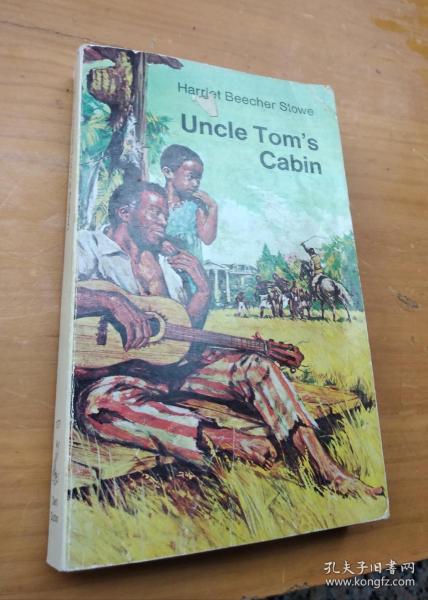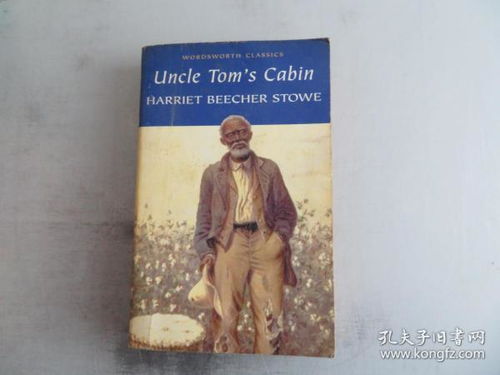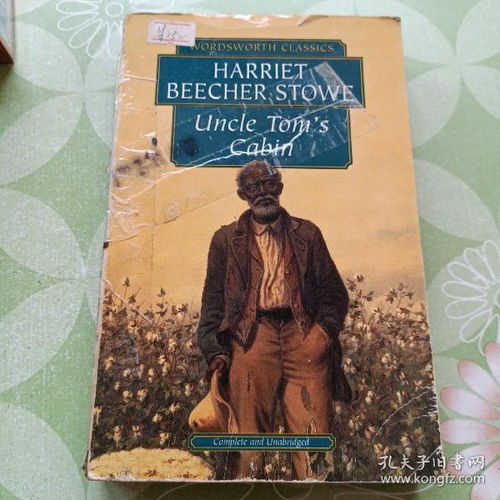Who Wrote Uncle Tom’s Cabin?
Harriet Beecher Stowe, a prominent American author, is the creator of the iconic novel “Uncle Tom’s Cabin.” Published in 1852, this novel played a significant role in shaping the discourse on slavery in the United States and the world. In this article, we delve into the life of Harriet Beecher Stowe, the background of the novel, and its impact on society.
Harriet Beecher Stowe’s Life and Background

Harriet Beecher Stowe was born on June 14, 1811, in Litchfield, Connecticut. She was the seventh child of Lyman Beecher, a prominent Congregationalist minister, and Roxana Foote Beecher. Harriet’s upbringing was steeped in religious and moral values, which would later influence her writing.
Stowe attended the Litchfield Female Academy, where she received a solid education in literature, history, and theology. After her marriage to Calvin Ellis Stowe, a professor at Lane Theological Seminary in Cincinnati, Ohio, she moved to the South. This experience exposed her to the harsh realities of slavery, which would later become the central theme of her novel.
The Background of “Uncle Tom’s Cabin”

“Uncle Tom’s Cabin” is a fictional narrative that tells the story of Uncle Tom, a loyal and kind-hearted slave, and his experiences in the American South. The novel is divided into two parts, with the first part focusing on the life of Eliza, a young slave woman, and her journey to freedom. The second part follows the life of Uncle Tom, who is sold several times and faces numerous hardships.
Stowe drew inspiration from real-life stories of slaves and abolitionists. She also conducted extensive research, including interviews with former slaves and abolitionists, to ensure the authenticity of her portrayal of slavery. The novel was published in a series of installments in a popular magazine, “The National Era,” before being released as a book.
The Impact of “Uncle Tom’s Cabin”

“Uncle Tom’s Cabin” had a profound impact on American society and the abolitionist movement. The novel gained widespread popularity and was instrumental in awakening public opinion against slavery. It was one of the best-selling books of the 19th century and played a significant role in the political debate leading up to the Civil War.
The novel also influenced the portrayal of African Americans in literature and the arts. Stowe’s depiction of Uncle Tom as a loyal, Christian slave has been both praised and criticized over the years. Some argue that the character perpetuates stereotypes, while others believe that Stowe’s portrayal of Tom’s suffering and resilience is a powerful testament to the human spirit.
Table: Key Characters in “Uncle Tom’s Cabin”
| Character | Description |
|---|---|
| Uncle Tom | A loyal and kind-hearted slave who faces numerous hardships. |
| Eliza | A young slave woman who embarks on a journey to freedom. |
| Simon Legree | A cruel and abusive slave owner who represents the worst aspects of slavery. |
| George Harris | A free black man who helps Eliza on her journey to freedom. |
Harriet Beecher Stowe’s “Uncle Tom’s Cabin” remains a significant work in American literature and history. Its portrayal of slavery and the struggle for freedom continues to resonate with readers today. As we reflect on the novel’s impact, we are reminded of the power of storytelling to influence social change and the enduring legacy of Harriet Beecher Stowe.




